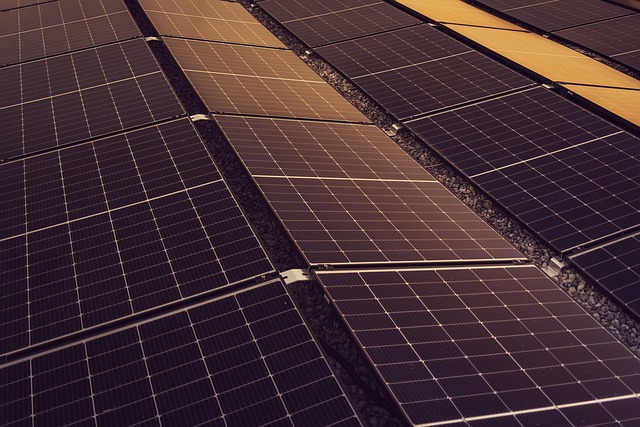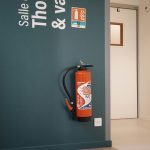Businesses across the UK are discovering that renewable energy isn’t just environmentally responsible, it’s financially smart. According to recent data from the Department for Energy Security and Net Zero, commercial solar installations have increased by 34% in 2025, with companies reporting average energy cost reductions of 40-60% within the first year.
The Financial Impact of Switching to Clean Energy Alternatives
The numbers don’t lie when it comes to renewable energy investments. UK businesses switching to solar power typically see return on investment within 4-7 years, with energy bill reductions of 40-70% immediately following installation. Commercial properties often achieve complete energy independence during peak daylight hours, eliminating grid dependency costs entirely.
Have you seen this : Create your dream hardwood conservatory in kent today!
Consider a Manchester manufacturing facility that installed a 200kW solar system last year. Their monthly electricity bills dropped from £8,500 to £2,800 within the first quarter, generating annual savings of £68,400. With fixed energy rates locked in for decades, they’ve effectively immunised themselves against volatile energy price fluctuations that continue plaguing the UK market.
Industrial operations benefit from predictable energy costs that traditional utilities simply cannot offer. Solar installations provide 25-year performance warranties, creating budget certainty that allows businesses to plan investments and growth strategies with confidence. Agricultural enterprises particularly benefit from this stability, with dairy farms and greenhouse operations seeing operational cost reductions of up to 60% after transitioning to renewable systems.
This might interest you : Elevate your space with cove cornice in london
The financial advantages extend beyond immediate savings. Enhanced property values, reduced carbon tax liabilities, and government incentive programmes create multiple revenue streams that compound over time, making renewable energy one of the most strategic investments businesses can make today. Are you ready to transform your energy expenses from a fixed cost into a competitive advantage? Renewable Energy Solutions enable businesses to achieve genuine energy independence while building resilient operations for the future.
Which Green Energy Solutions Transform Modern Business Operations Most Effectively
Modern businesses have access to four transformative renewable energy technologies that fundamentally reshape how companies operate while delivering substantial cost savings and environmental benefits.
- Commercial solar panels provide the most immediate impact for most businesses, reducing electricity costs by 50-90% while offering excellent ROI within 5-7 years. These systems work particularly well for manufacturing facilities, warehouses, and office buildings with suitable roof space.
- Battery storage systems maximize solar investment value by storing excess energy for peak-demand periods, providing backup power during outages, and enabling participation in grid balancing programs that generate additional revenue streams.
- Wind energy solutions excel for businesses with adequate land space, particularly in agricultural and industrial sectors. Small to medium-scale turbines can complement solar installations for year-round energy generation.
- Heat pump technology revolutionizes heating and cooling operations, delivering up to 400% efficiency compared to traditional systems while integrating seamlessly with renewable electricity sources.
Each technology offers unique advantages depending on your business type, location, and energy consumption patterns. The most effective approach often combines multiple solutions for comprehensive energy independence.
How to Choose the Right System for Your Commercial Building
Selecting the right renewable energy system requires a comprehensive energy assessment of your commercial property. This evaluation examines your current consumption patterns, peak demand periods, and seasonal variations to determine the optimal system size and configuration for maximum efficiency.
Technical constraints play a crucial role in system selection. Roof structural integrity, available space, electrical infrastructure capacity, and local planning regulations all influence which renewable technologies will work best for your facility. Buildings with extensive south-facing roof areas typically favour solar installations, while properties with limited space might benefit from high-efficiency panels or alternative mounting solutions.
Professional consultation ensures you avoid costly mistakes and maximise return on investment. Energy specialists can identify potential issues early, recommend the most suitable technology mix, and design systems that align with your business operations and growth plans.
The renewable energy sector offers end-to-end solutions that simplify the decision-making process. From initial site surveys through installation and ongoing maintenance, comprehensive service providers handle every aspect of your transition to clean energy, ensuring seamless integration with your existing operations.
Government Support and Incentives Available in the UK Market
The UK government has significantly expanded its renewable energy incentives for 2024-2025, creating unprecedented opportunities for businesses to transition to clean energy. The Enhanced Capital Allowances scheme now allows companies to claim 100% first-year capital allowances on qualifying renewable energy equipment, effectively reducing taxable profits pound-for-pound with investment costs.
Commercial and industrial enterprises can access the Green Business Fund, which provides grants covering up to 40% of installation costs for solar and battery storage systems. Agricultural businesses benefit from additional support through the Sustainable Farming Incentive, offering annual payments of £28 per hectare for implementing renewable energy solutions alongside existing operations.
The application process requires businesses to demonstrate energy efficiency assessments and provide detailed project specifications through the government’s online portal. Companies must meet minimum energy output thresholds and commit to maintaining systems for at least seven years to qualify. Industrial facilities with high energy consumption receive priority processing, with approval timelines typically ranging from 8-12 weeks for standard applications.
Implementation Timeline and What to Expect During Installation
A typical commercial solar installation follows a structured timeline spanning 8 to 16 weeks from contract signature to system activation. The initial design and permitting phase consumes approximately 4-6 weeks, during which our engineers finalise technical specifications and secure all necessary regulatory approvals from local authorities.
The physical installation phase ranges from 1-3 weeks depending on system complexity and site conditions. Weather considerations play a crucial role in scheduling, with installations typically proceeding more efficiently during spring and summer months when daylight hours are extended and precipitation is minimal.
Your business operations remain fully operational throughout the installation process. Our installation teams coordinate closely with your facility managers to minimise any disruption, often working outside peak business hours when required. Power interruptions are limited to brief periods during electrical connections, typically lasting no more than a few hours.
Post-installation support begins immediately upon system commissioning. Our comprehensive monitoring services track performance metrics from day one, ensuring optimal energy generation and identifying any maintenance requirements before they impact system efficiency.
Your Questions About Business Energy Independence
Business owners frequently ask about the practical aspects of transitioning to renewable energy. These common questions address the key concerns around costs, implementation, and performance that matter most to your business operations.
How much can my business save by switching to renewable energy?
Most businesses reduce energy costs by 30-70% within the first year. Savings depend on your current consumption, system size, and local energy rates. Commercial solar typically pays for itself within 5-8 years.
What are the best renewable energy options for commercial buildings?
Solar panels offer the highest return on investment for most commercial properties. Battery storage systems maximize savings by storing excess energy. Wind power works well for larger industrial sites with adequate space.
How long does it take to install solar panels for business use?
Commercial solar installations typically take 4-8 weeks from contract signing to system activation. This includes planning, permits, installation, and grid connection. Larger projects may require additional time for design and approvals.
What government incentives are available for businesses going green?
UK businesses benefit from the Smart Export Guarantee, Enhanced Capital Allowances for qualifying equipment, and various grants for energy efficiency improvements. Local councils often provide additional green business incentives.
Is renewable energy reliable enough for industrial operations?
Modern renewable systems with battery backup provide 99%+ reliability. Smart grid technology ensures continuous power supply. Many industrial facilities achieve complete energy independence with properly designed solar and storage combinations.











